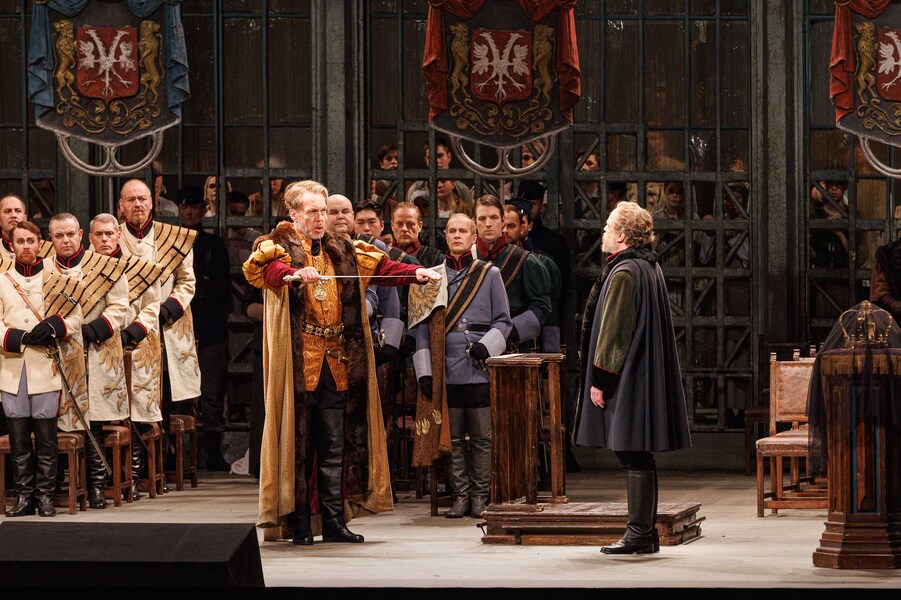With magical sounds, Richard Wagner tells a story of love, betrayal and intrigue.
Romantic opera in three acts
Performed in German with German and English surtitles
Premiere
21. January 1983
In brief
Richard Wagner’s »Lohengrin«, which premiered in Weimar in 1850, is closely associated with Dresden: Inspired by the charming landscape around the nearby village of Graupa, Wagner began the opera in 1846 when employed as Kapellmeister to the royal court, completing the work in the Saxon capital in 1849. Since its first performance in Dresden ten years later, the work has been heard over 850 times at the Semperoper. This production from 1983 is a true classic, thrilling audiences year after year. Retaining the work’s roots in both the 19th century and the Middle Ages, director Christine Mielitz tells the story of Elsa, unlawfully accused of murder and at the mercy of her adversaries in the duchy of Brabant, who is rescued by the mysterious Swan Knight. This is a tragic tale of a woman fighting for recognition but also for knowledge. At the end comes the bitter realization that her justifiable wish to know the name of the person to whom she owes her happiness will result in his downfall.
Storyline
Act 1
Count Telramund brings charges before King Heinrich I against Elsa of Brabant. He accuses her of having murdered her younger brother Gottfried in order to win the throne of Brabant for herself. The King orders trial by ordeal: a duel between Telramund and a champion who will fight on Elsa’s behalf shall decide her innocence or guilt, but no-one will take up Elsa’s cause. Then a miracle occurs. A stranger whom Elsa had seen in a dream takes up the challenge and vanquishes Telramund. The unknown man offers Elsa his hand in marriage under the condition that she never asks his name or provenance. Elsa is thus made solely responsible for whether the new ruler, celebrated as a hero by the Brabantines, stays or not.
Act 2
Ortrud, who had pressed her husband Telramund to the false accusations against Elsa, concocts new plans for revenge in the wake of the defeat. Feigning friendship and sympathy, she sows doubt about the nameless knight in Elsa’s heart. In front of the cathedral at the wedding the next day, matters come to a head. Ortrud and Telramund accuse the foreign hero of sorcery and fraud. Once more he puts to Elsa the question of confidence which she answers with an unequivocal declaration to her husband.
Act 3
Once alone with her protector Elsa cannot resist the forbidden question any longer. At that very moment Telramund bursts into the bridal chamber with his co-conspirators to kill the foreign hero. Elsa herself hands him the weapon with which Telramund is fatally struck. The stranger now wishes to reveal his secret publicly. Before the King and assembled deputies Lohengrin proclaims his name and background. Ortrud rejoices over failure of his mission, but her triumph does not last. Through prayer Lohengrin brings about the return of the boy Gottfried, the legitimate heir who had been believed dead.
Explore
Lohengrin











